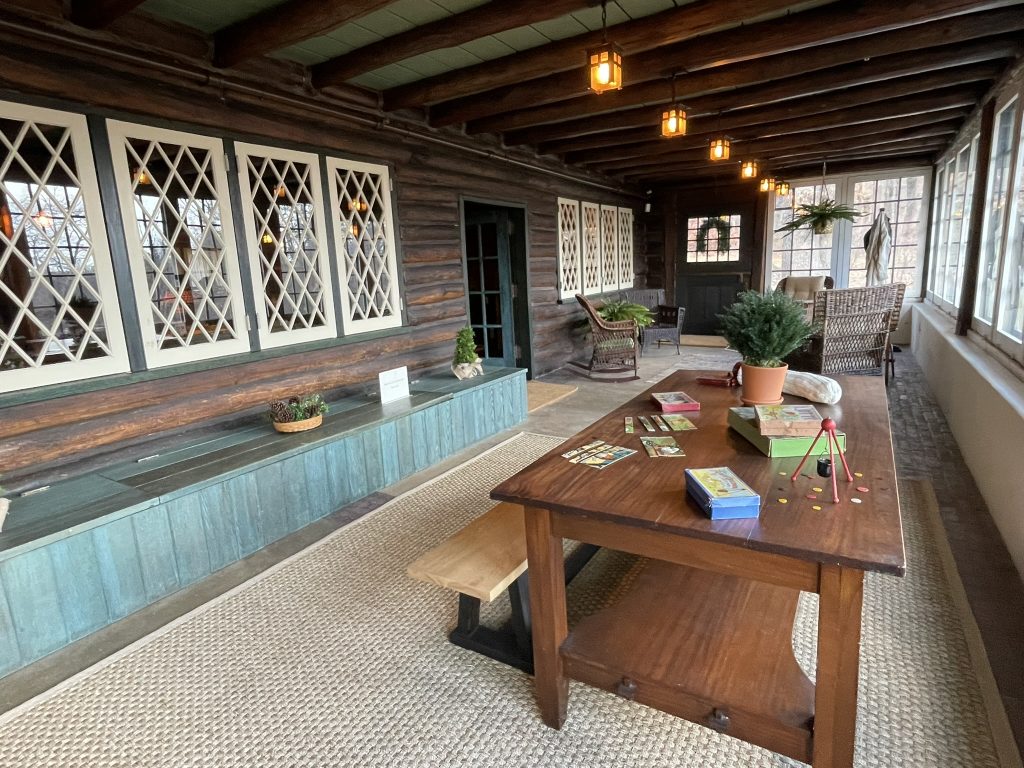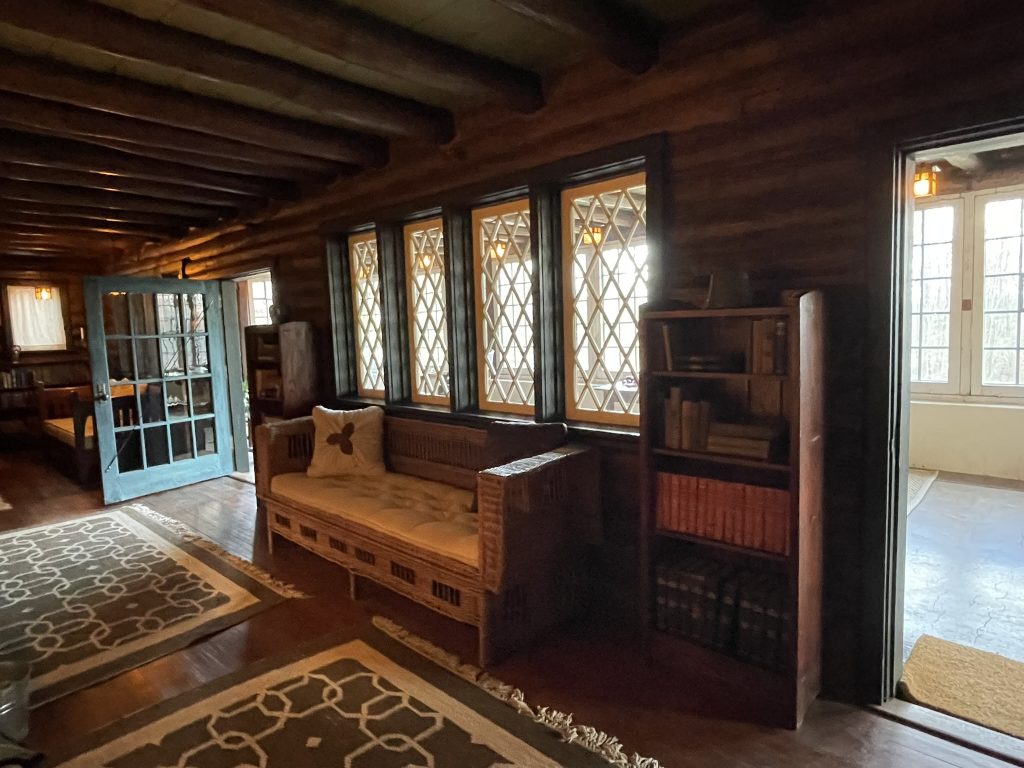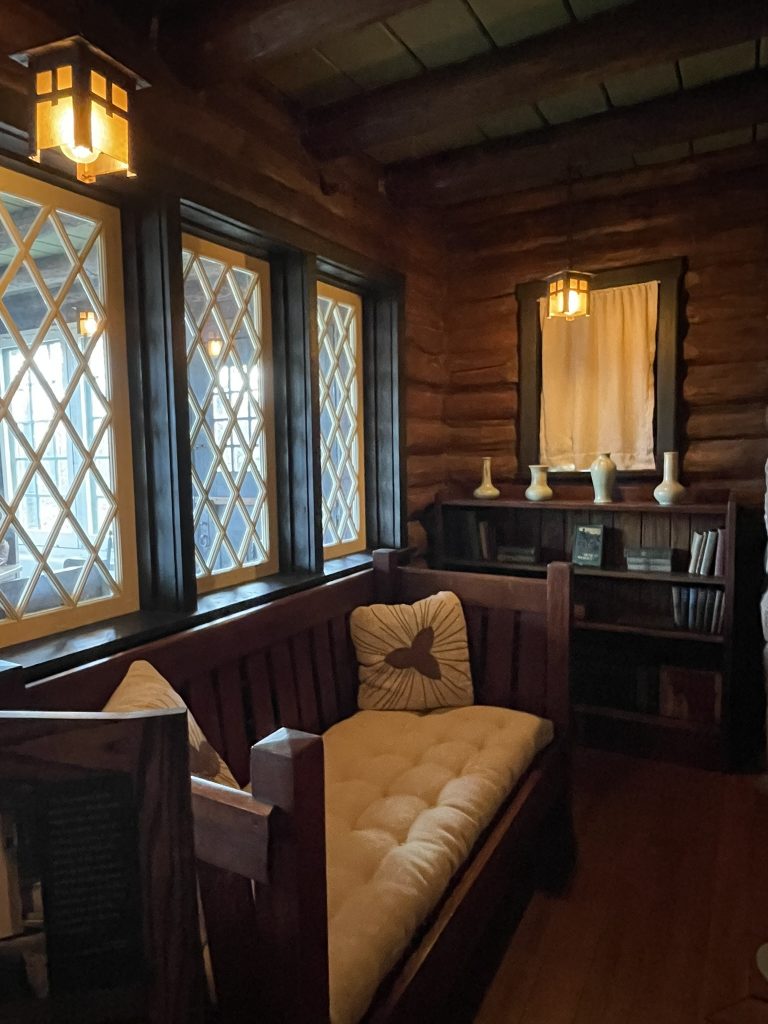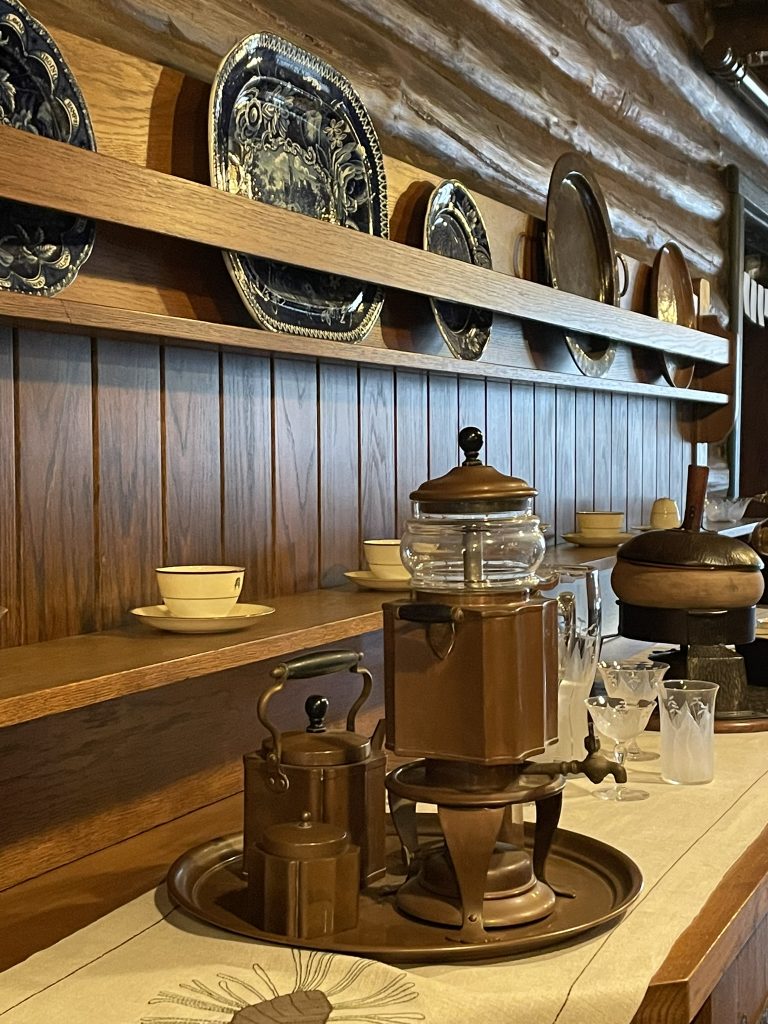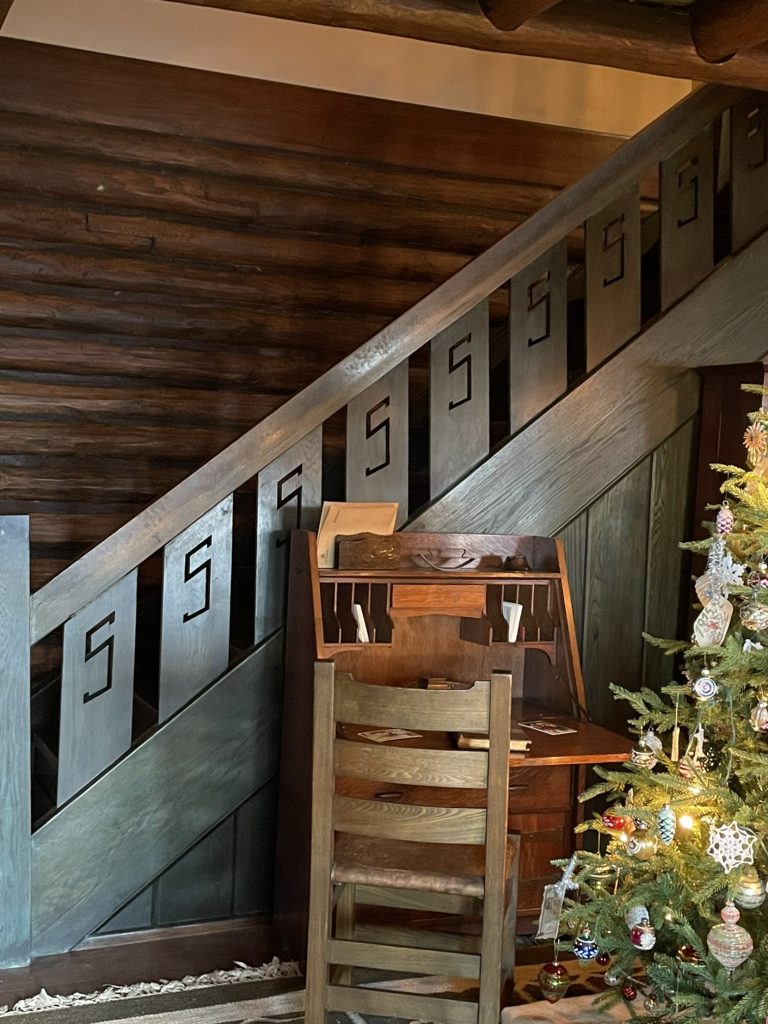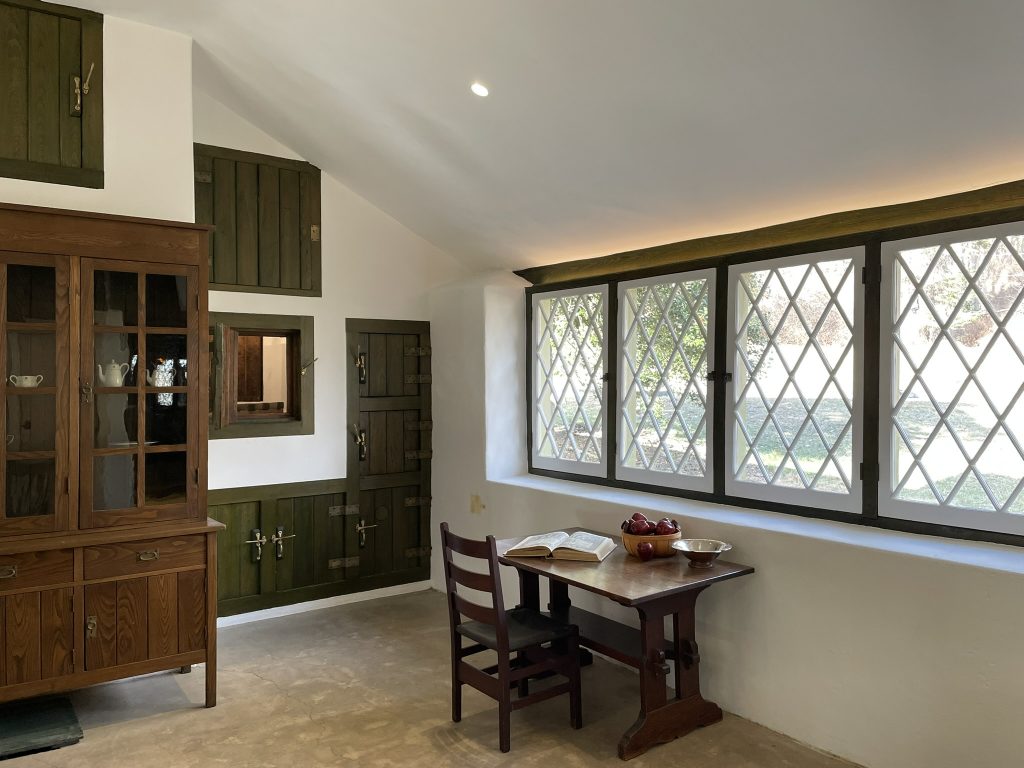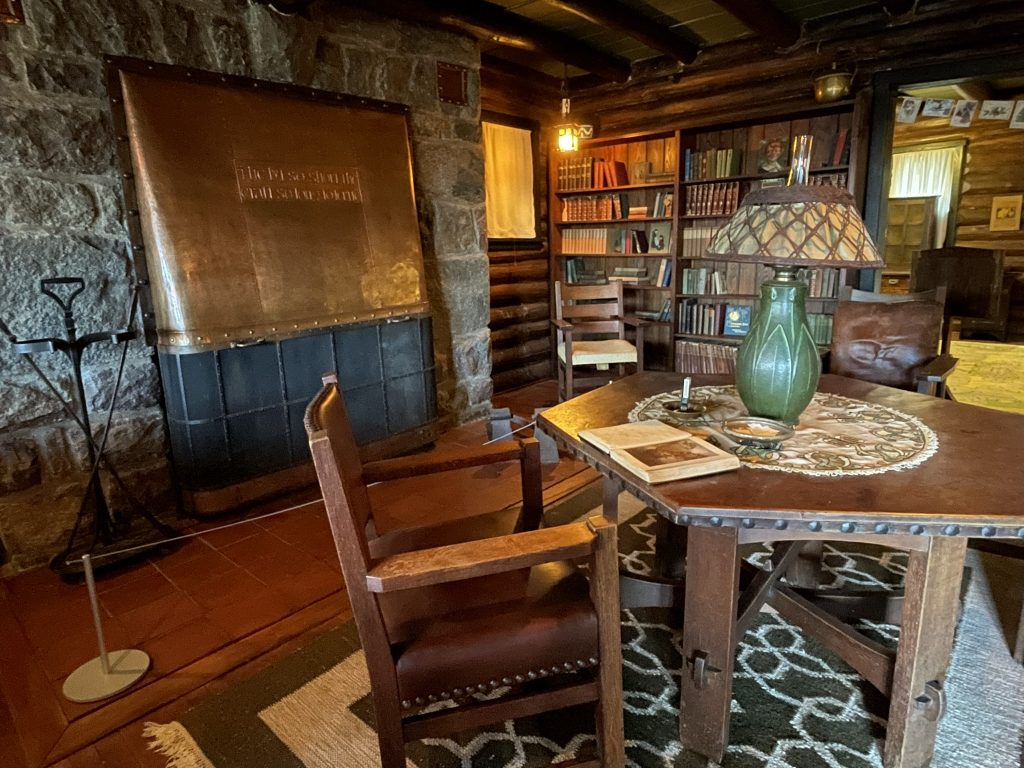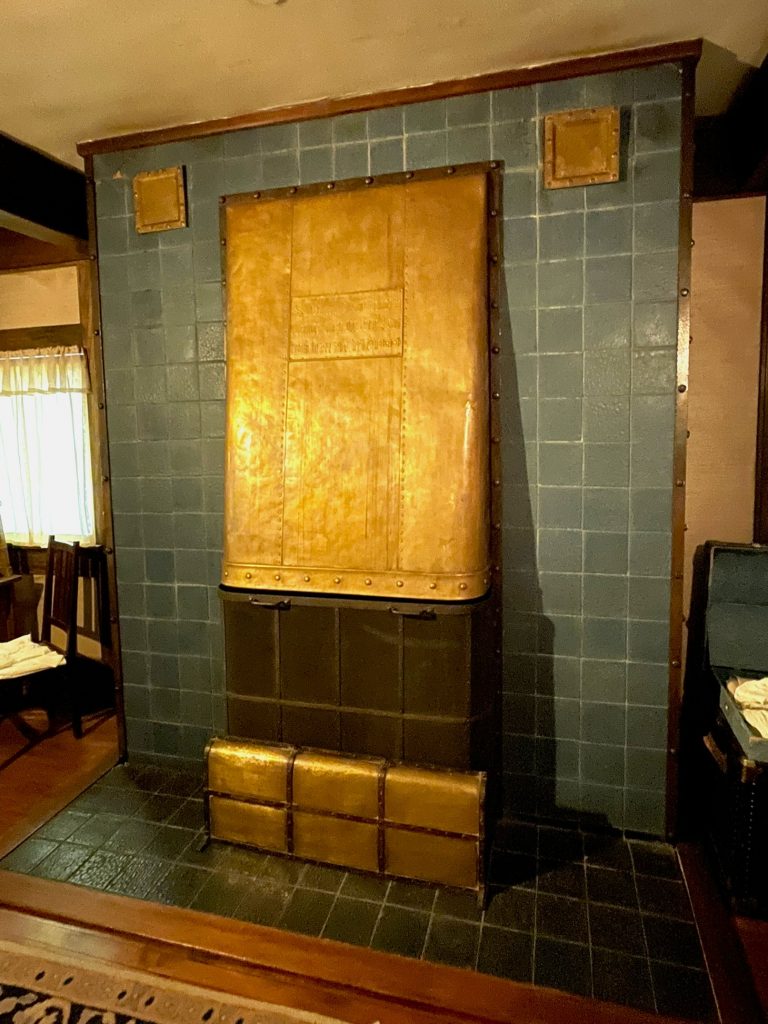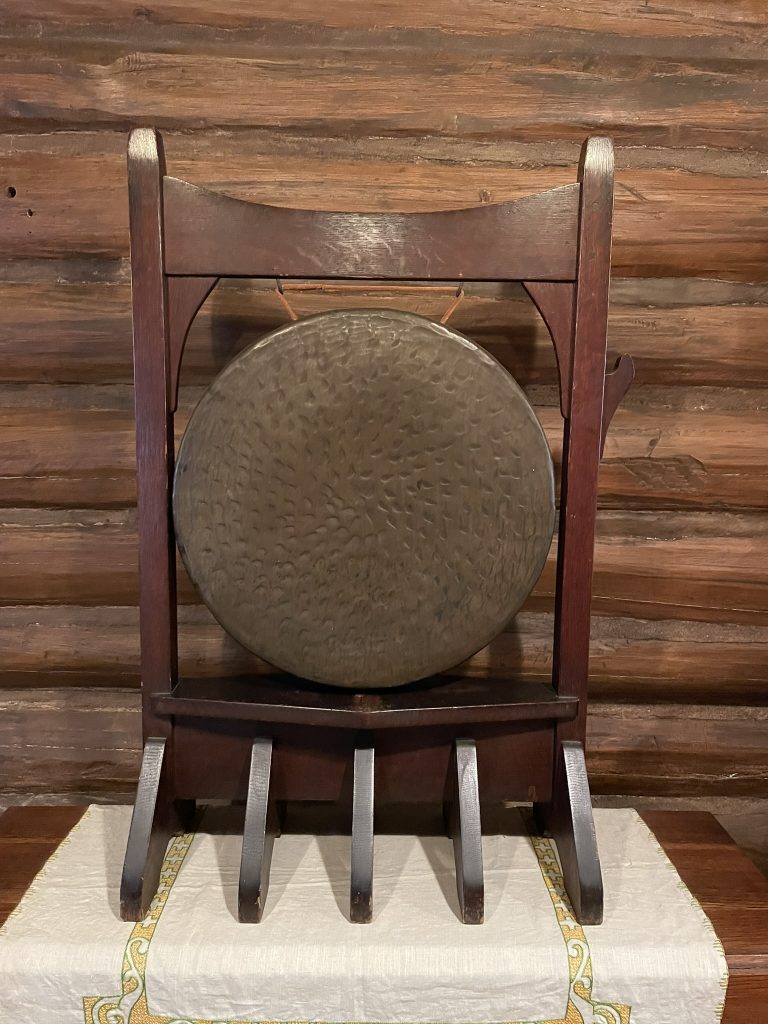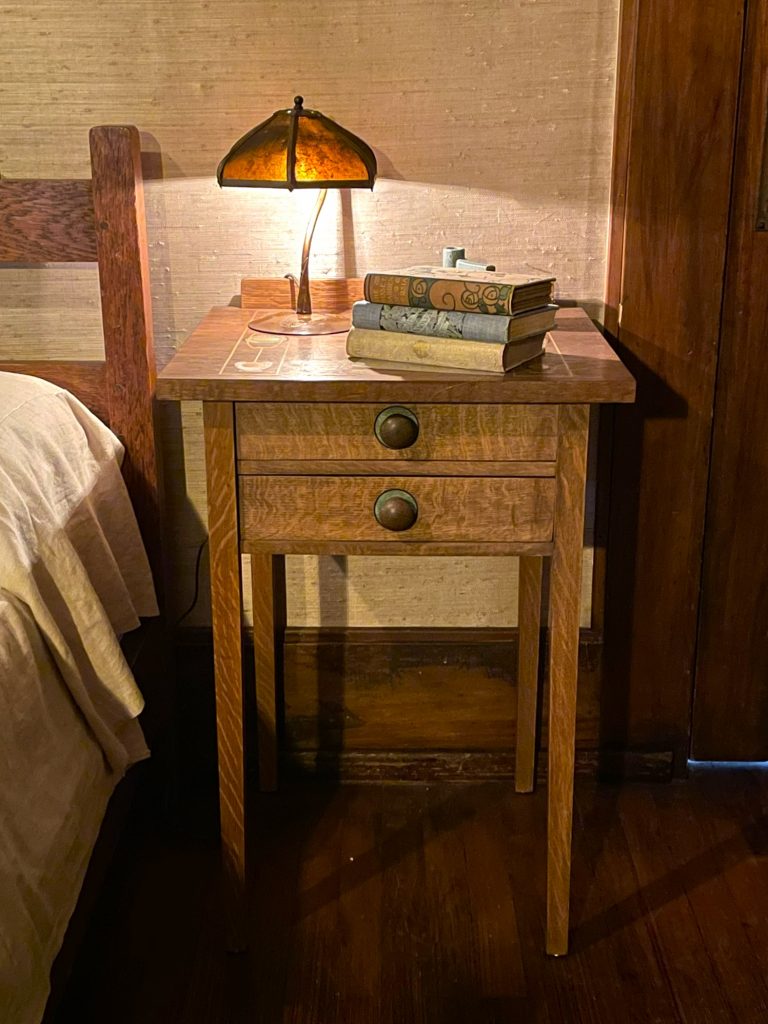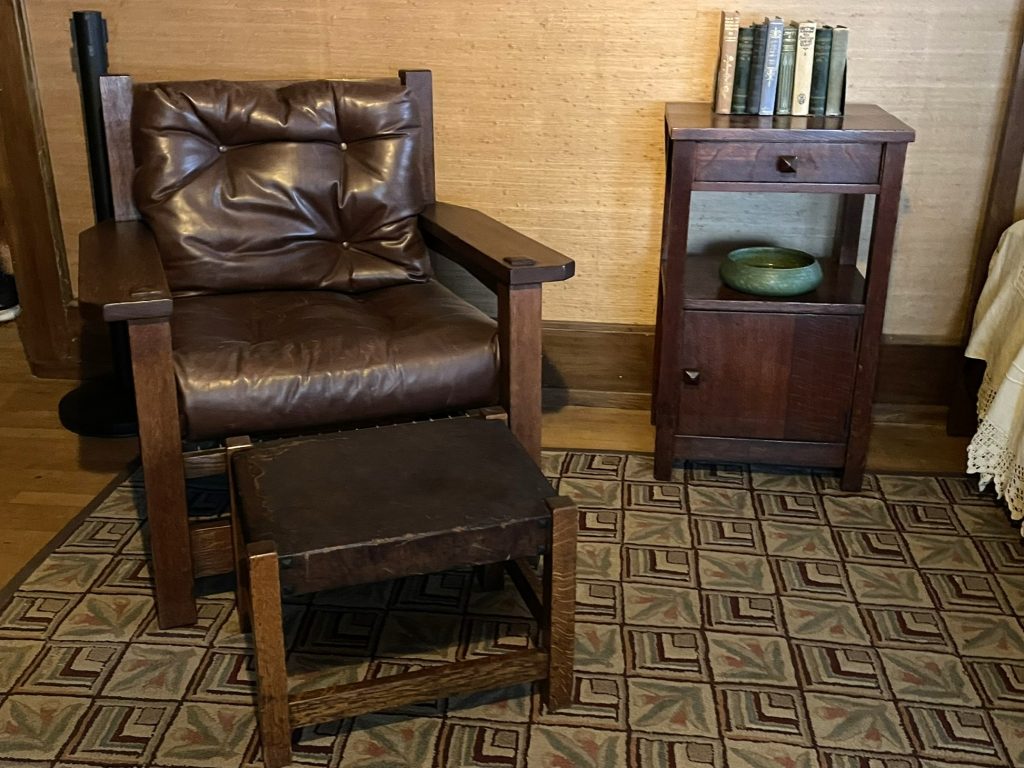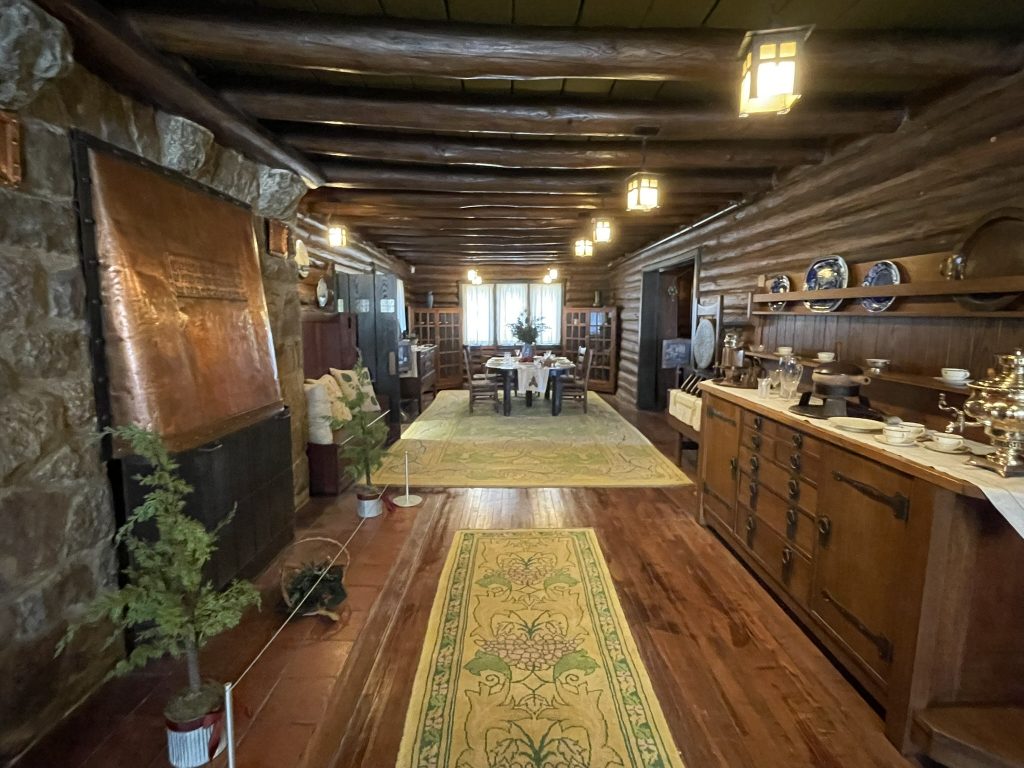We are both fans of architecture and the Arts and Crafts movement, so I’ve been watching and waiting for the Stickley Museum at Craftsman Farms in Morris Plains, New Jersey to reopen. It had been closed for restoration and renovation work since 2020, when it sustained damage from Tropical Storm Isaias.
Craftsman Farms was founded by designer Gustav Stickley (1858-1942) as a farm and school for boys. The primary building (a “club house” of sorts) for the school is a log house constructed in 1911, and features large spaces for students to gather. It is built from hewn chestnut logs and local stone sourced on site.
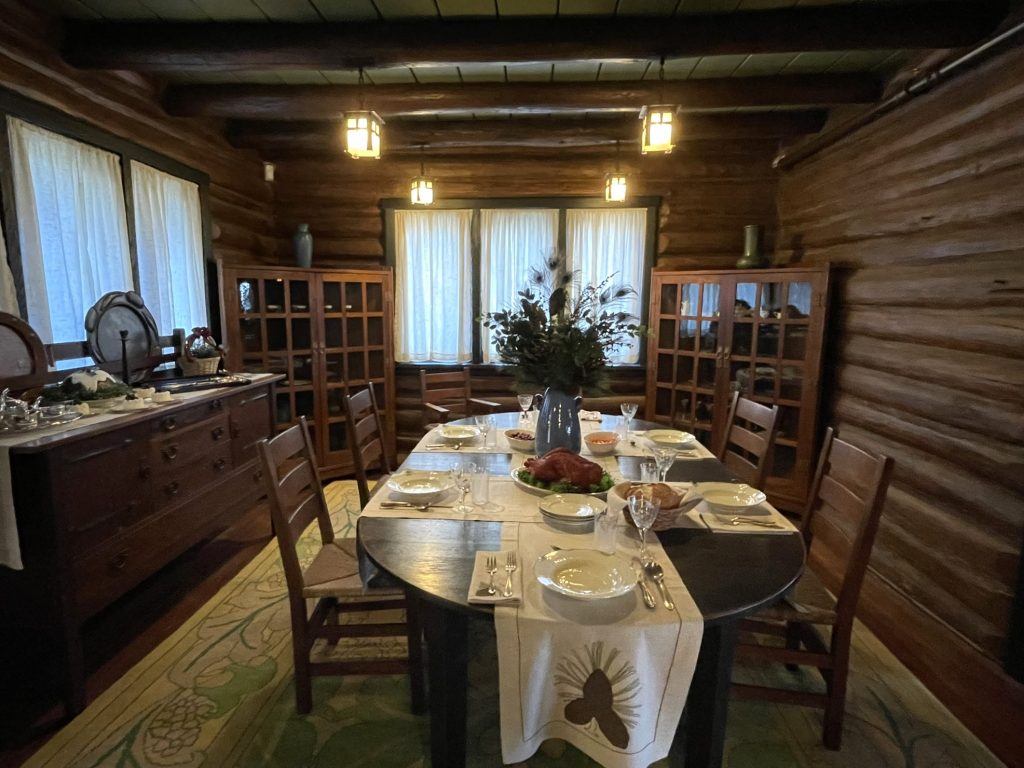
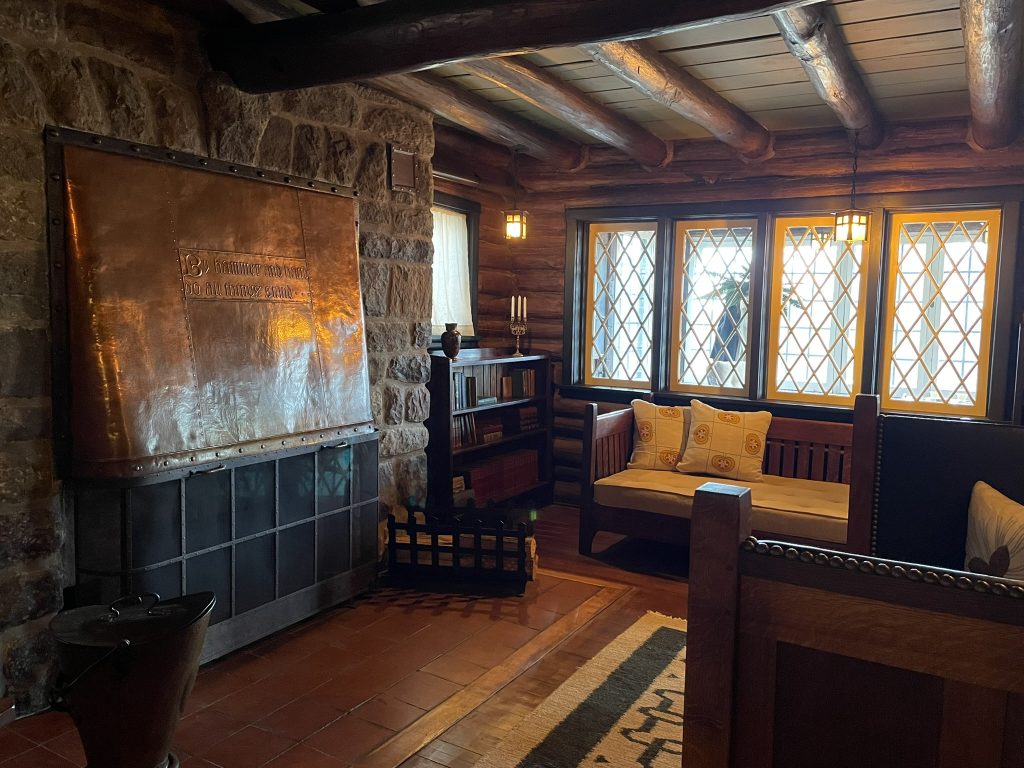
The house sits on 26 acres now, but the original farm was 650 acres. The plan was that the farm and school would be self-sufficient, with vegetable gardens, orchards, dairy cows, and chickens all on site.
A separate home for the Stickley family was planned on the farm, but the school never came to fruition, so the Stickley family lived in the clubhouse themselves. Financial difficulties forced Stickley into bankruptcy in 1915, just a few years after it was built, forcing the family to give it all up. The home is so beautiful, it must have been heartbreaking to leave.
It was acquired in the bankruptcy sale by Major George and Sylvia Wurlitzer Farny in 1917, and remained in their family until 1989. In 1989 the gorgeous building was threatened with development, so the township stepped in to acquire it through eminent domain.
Stickley’s work helped shape the American Arts and Crafts movement. He was primarily known for his furniture (though he also produced textiles, lighting, and metalwork), which are today collectors’ items that can be found in museums throughout the world. In 1999 a Stickley sideboard sold for $540,000!
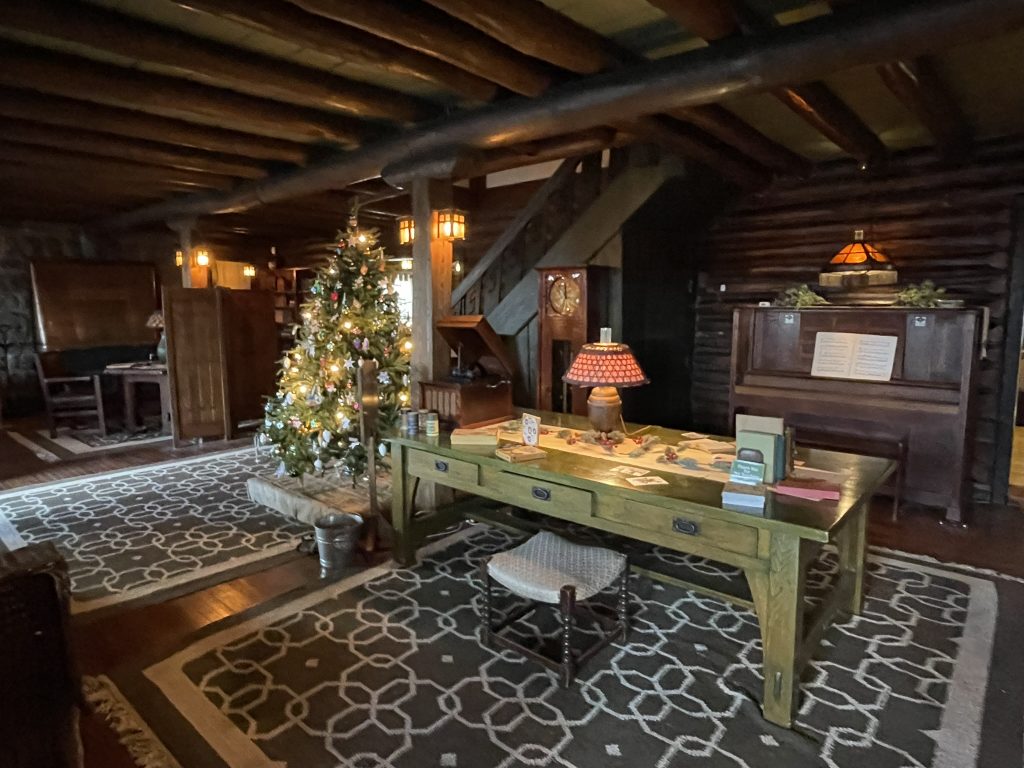
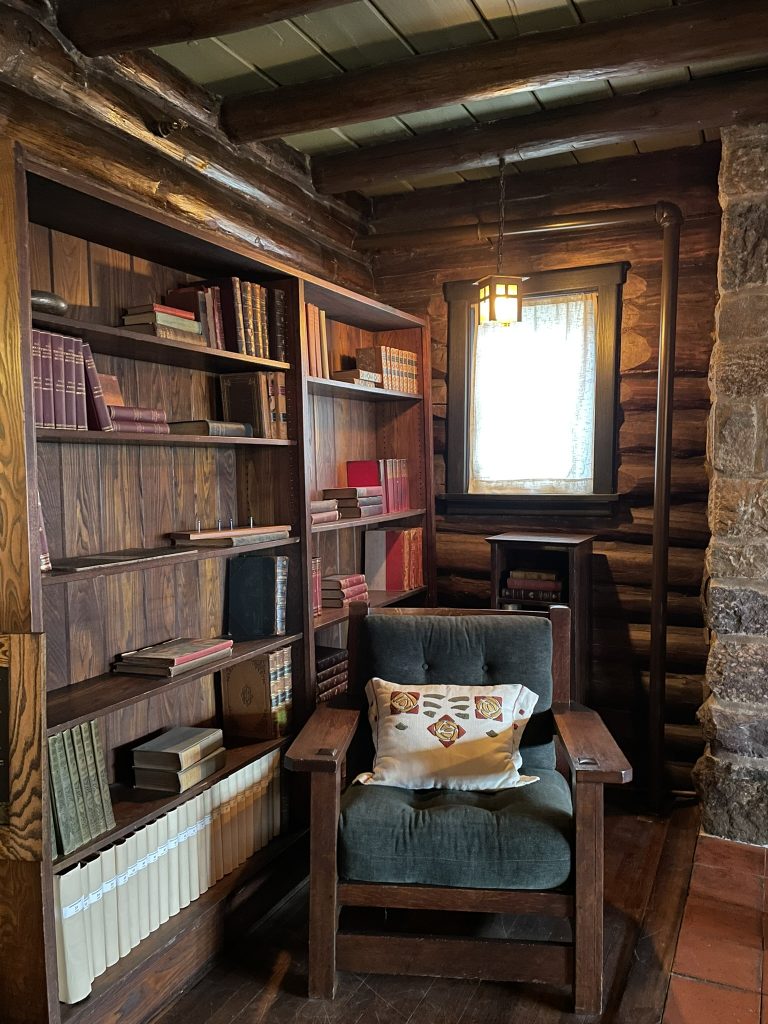
The museum’s website describes Stickley’s design philosophy:
Stickley’s new furniture reflected his ideals of simplicity, honesty in construction, and truth to materials. Unadorned, plain surfaces were enlivened by the careful application of colorants so as not to obscure the grain of the wood. Mortise and tenon joinery was exposed to emphasize the structural qualities of the works. Hammered metal hardware, in armor-bright polished iron or patinated copper emphasized the handmade qualities of furniture which was fabricated using both hand working techniques and modern woodworking machinery….Dyed leather, canvas, terry cloth and other upholstery materials complemented the designs.
We both loved the building and wonderful furnishings inside. What a treasure!
